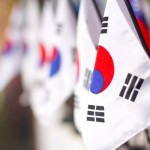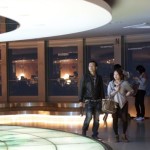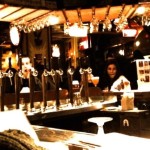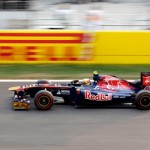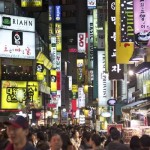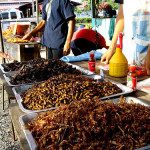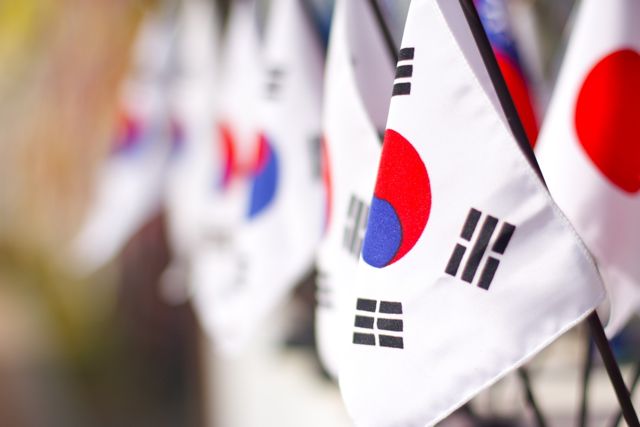
The Korean war ended in 1953 after the United Nations and most noteably the United States pushed back the invading North Korean army. The country was split in two establishing a North/South border and the Demilitarized Zone (DMZ). The zone stretches for 2km on both sides of the border and is one of the most heavily armed borders in the world. About an hours drive from Seoul the border separating the two countries is the last remaining border separating two countries, however the tour that we took in the South was seemingly keen to stress reunification.
Families Separated
The Korean war split millions of families between North and South leaving many people without loved ones. Around the DMZ there are many scenes of remembrance for these family members that are still separated.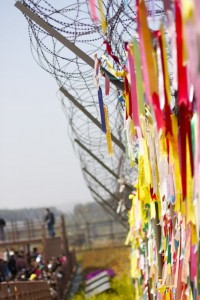
News broke on the 4th October 2011 that 9 people defected from North Korea to the south, found in a small wooden boat drifting off the coast of Japan the defectors were brought to South Korea. Arriving at Incheon International Airport their faces were covered to prevent family members still in the North from facing any punishment for their actions.
Propaganda
There is no doubt that propaganda between North and South is fierce with both sides having set up so called “peace villages”. In one such village in the South a 98 meter high flagpole was erected in the 1980’s, the North responded with a 160 meter flagpole that is the tallest in the world and visible from the DMZ in Kijong-dong town.
Balloons carrying leaflets have been released from the South side of the border by activists back in 2003 although the military ceased this activity in 2000. The leaflets were intended for North Korean’s. On 8th October 2011 North Korea threatened to retaliate again what they labelled “provocative” acts as activists in the South planned to float balloons with leaflets, dvd’s and a dollar bill (to encourage people to pick them up) in time for the 66th anniversary of the Korean Workers’ Party inauguration in North Korea.Other tactics in the South include threats to mount giant speakers along the DMZ to blast out anti-Pyongyang language over the border.
The Third Tunnel of Aggression
In October 1978 the Third Tunnel of Aggression was discovered under the North/South border when defectors from the North supplied information about it’s whereabouts. Apparently designed for a surprise attack on Seoul by the North, the tunnel could be used by 30,000 troops in an hour. At first North Korea denied creating the tunnels but evidence of dynamite point towards South Korea, drill marks and water being drained back towards the North suggest otherwise. Another four tunnels have also been found but there are said to be up to ten in total and the US and South Korea regularly drill in the area in the hope of discover the tunnels.
No photography is allowed of the tunnels and a hard hat is worn before descending a steep path that seems to go on forever until you reach the actual entrance of the tunnel. The tunnel itself is expected, with very little head room. Tourists walk somewhat crouched along the tunnel to toward the Military Demarcation line, but the line itself is blockaded by the South Koreans with three separate barricades so there is very little to see. The trek back to the top is steep and too much for some tourists who can be seen breathless and panting halfway up the path.
No photos
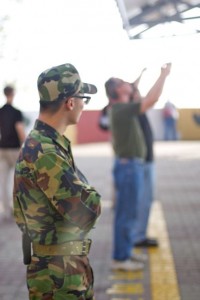
Looking out across the DMZ to North Korea we could just make out mountains disguised in fog or more likely, city smog. There was a thick yellow line fours from the edge indicating that you are not permitted to take photographs at any point beyond. Any photos could be manipulated for propaganda purposes or used as intelligence, although this warning didn’t prevent some seemingly oblivious tourists ignoring the line and snapping away, only to be shouted at and have their memory card wiped.
Reunification
Being on a DMZ tour on the South side of the border our tour was keen to stress that reunification of Korea was important and that the South are already taking steps towards it. We were taken to a train station (Dorasan Station) where everything is setup ready for a commuter train to start running from South to North, it was symbolic but without co-operation from the North it won’t be running any time soon. Outside the station shows more signs of reunification symbolism with a large hard to miss sign point the way to Seoul.
As if we needed more convincing, we were shown a Hollywood style video of the DMZ complete with America trailor vocals telling us how special the area was. The video highlighted the many different animal species that are thriving in the area and pointed to unification for the future. The video was a little surreal and left myself wondering just what I had just watched? A video celebrating the most heavily militarized border in the world?
Overall the tour of the DMZ is fascinating, it is hard to believe that such a border still exists and families are still to this day separated.


The trip was organised by Travelllll.com, tours of the DMZ are available with Expedia.co.uk and our flights were provided by KLM
The tour activities were provided by AJU Tours who were insightful and very professional.

